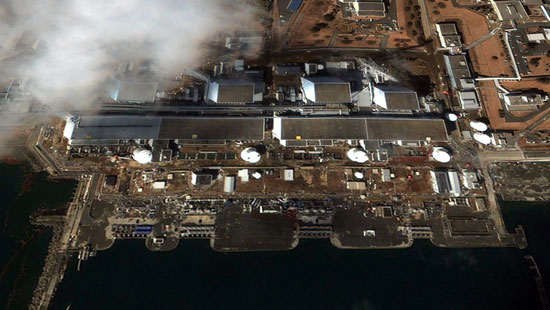Japan tested 300,000 children for suspected radioactivity
Japanese health officials are now beginning to examine more than 300,000 children living near the Fukushima nuclear plant, which was badly damaged in the March earthquake and tsunami, as the thyroid gland had abnormal symptoms.
>>> Japan established a forbidden zone around Fukushima I factory
>>> Half of Fukushima children are radioactive
Their parents expressed concern about the link between abnormalities in the linear and radioactive leaks from the Fukushima nuclear plant. In 1986, after the Chernobyl disaster, there were similar reports.

Fukushima I. Power Plant
The Fukushima plant was devastated by the earthquake and tsunami in March. Double disaster has claimed the lives of 20,000 people.
Currently, people are still very worried about the radioactivity still exists, affecting health.
Tests were conducted after an unofficial survey found that every 10 out of 130 babies who were evacuated from Fukushima had hormonal and thyroid abnormalities. But those who conducted the survey could not prove the connection between these abnormalities with the nuclear crisis in Japan.
Japanese health officials hope to test about 360,000 people under the age of 18 when the nuclear crisis takes place in March and will maintain that follow-up test.
More than 100 children, ages more vulnerable to radioactive iodine than adults, were tested yesterday, October 9.
Japanese officials say the children will not be affected if outside the evacuation radius of 20km. But people are still very concerned, especially when it comes to the 1986 Chernobyl disaster, because there seems to be a link between thyroid cancer and radiation.
More than 6,000 cases of thyroid cancer have been detected in people exposed to Chernobyl fallout when they were children or young people.
Meanwhile, the Japanese government said the recovery and decontamination process could take years.
- Radiation in Japan is no longer dangerous
- Sunflower does not reduce radioactivity in soil
- Fukushima children are tested for cancer periodically
- Monkeys measure radiation in Japan
- Japan announces secret radioactive data
- Radioactivity in Tokyo does not come from Fukushima
- Japan detected high levels of radiation in Ikebukuro Park
- Radiation detection is 10 times higher in Japan
- Many drugs for children are tested only on adults
- Bird flu is complicated in Asia
- Fukushima children are exposed to radiation below the danger threshold
- Japan banned rice exports from Fukushima
 Is the magnetic North Pole shift dangerous to humanity?
Is the magnetic North Pole shift dangerous to humanity? Washington legalizes the recycling of human bodies into fertilizer
Washington legalizes the recycling of human bodies into fertilizer Lightning stone - the mysterious guest
Lightning stone - the mysterious guest Stunned by the mysterious sunset, strange appearance
Stunned by the mysterious sunset, strange appearance